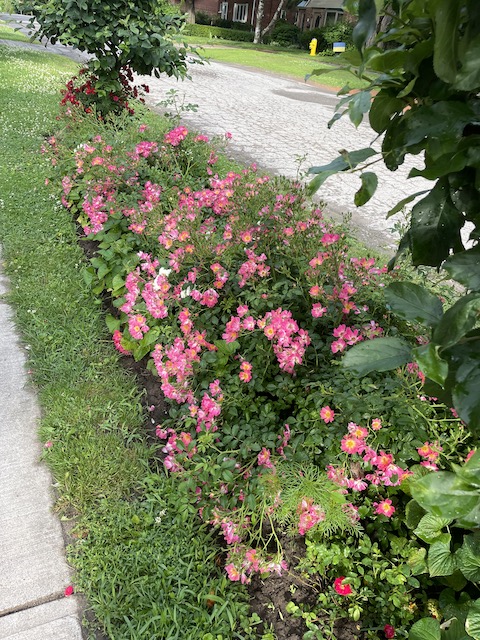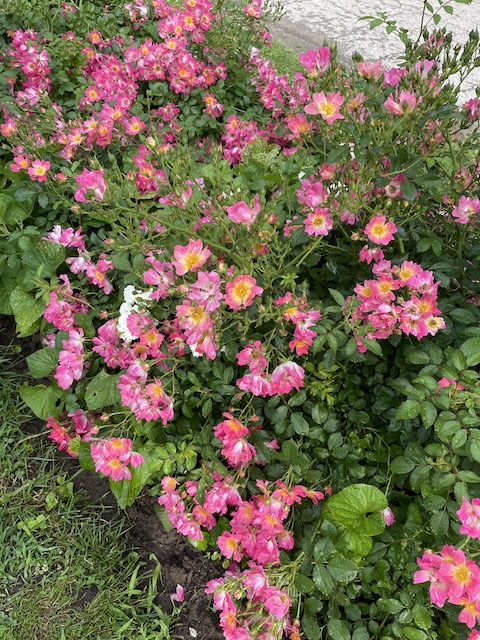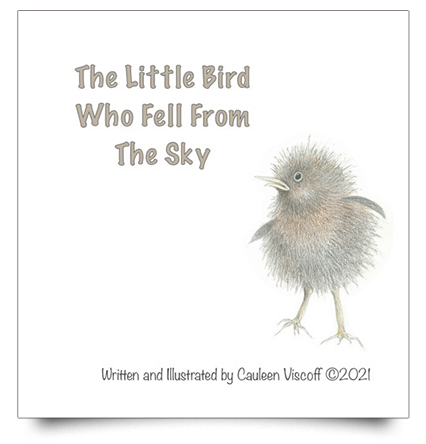I’d love to connect with you! Sign up for my monthly newsletter, "Garden Bliss & Blunder”
My Rose Hedge
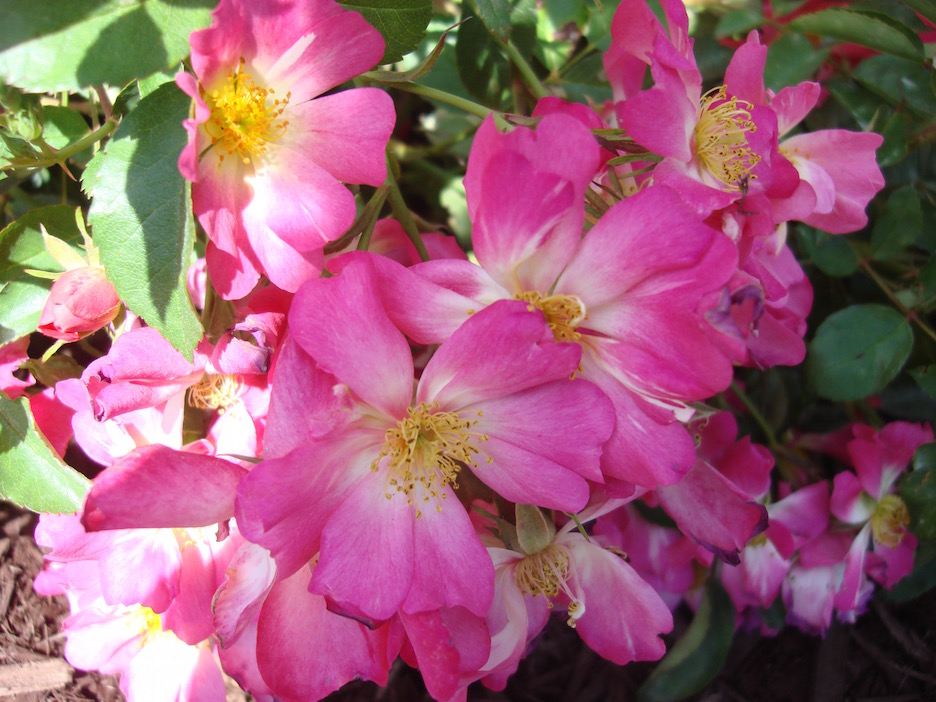
A few years ago, I saw a gorgeous ad for Drift roses as a rose hedge. I decided my boulevard could benefit from a rose hedge - it was on my ‘bucket list’. And when, I found “The Pink Drift Rose” I fell in love.
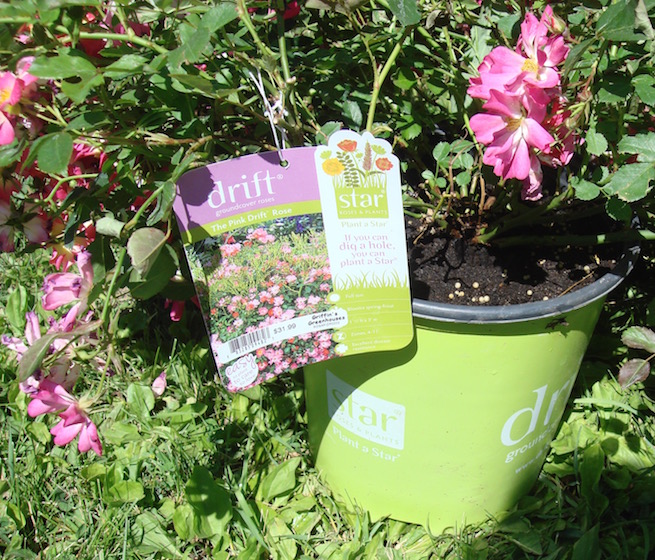
However, my boulevard had some issues; we had already planted two dwarf apple trees there, moving them away from the Black Walnut in the back garden and the soil was full of gravel and hard-packed clay - sticky goo when wet. Ugh.
Planting day was hot and sunny - but the roses needed planting… too long in their pots encourages the roots to circle the pot and get tangled.
I dug the first of three holes down about 6 to 8 inches and couldn't get the shovel through the next layer… it was dry as we had no rain for a few weeks, so I filled the hole with water and let it sit while I dug hole number 2.
It took almost 20 minutes for the water to drain away and the bottom of the hole was sticky mud filled with debris: asphalt (it's a boulevard, remember?) with stones of all sizes. I put that muddy mess in some bins, separating it from the top layer of soil already removed.
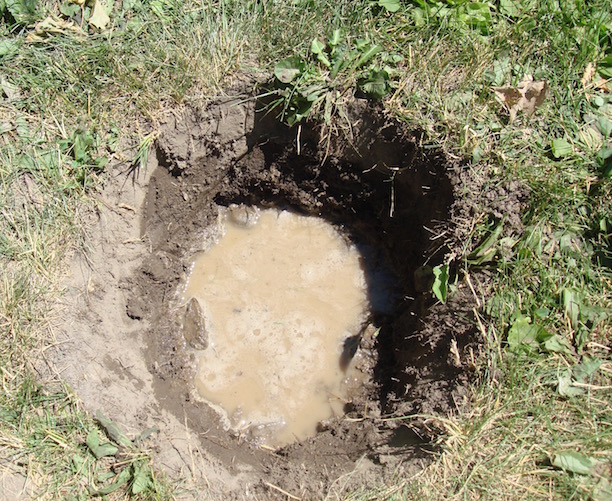
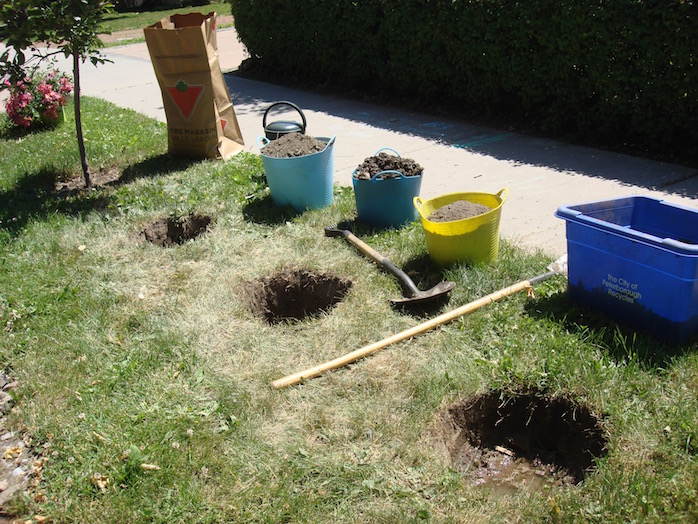
I dug each hole wider and deeper than I needed, so there was space for some compost to mix in with the original soil. I don't usually add anything to the soil when I plant, but because I removed a lot of debris, I didin't have enough of the native soil to put back, so I mixed compost with the original soil.
It's really important for all plants to be put into the soil it will grow in. If you only fill the hole with compost, the plant roots will never move beyond that rich soil... and begin to encircle the hole...why would they bother to reach out when all the nutrients they need are right there?
Every plant needs to form roots strong enough to seek its own nutrients by extending further and further beyond the edge of the original hole.
I removed all soil from the potted rose and washed the roots, trimming any broken or damaged roots. Plants are put into a soil-less mix full of fertilizer to make the plant you buy attractive. Remove this soil... but mix in a little with the native soil.
If the roots were very damaged or the rose was purchased late in the season after being in a pot for at least one season...you could add some mycorrhizae ( I have added a product called "Myke" around the outside of the hole). It is a fungi which is essential for root growth.
Sprinkle a small handful of the powder around the inside of the planting hole.
(The grey spots in the photo below)
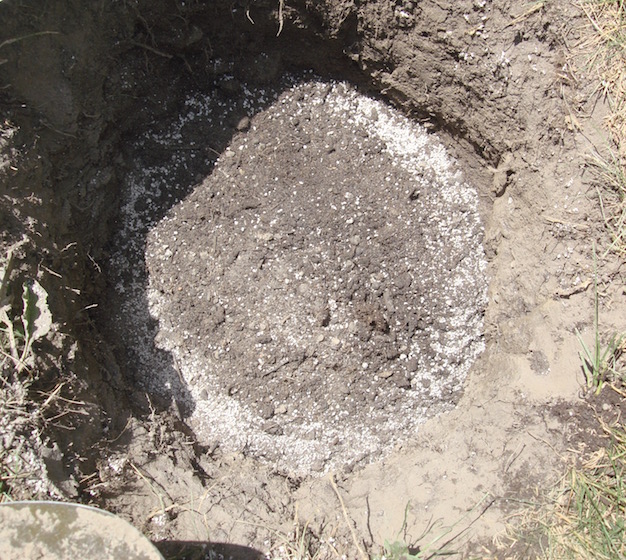
Next came planting the rose into the hole and adding the mixture of soils all around the edge of the plant, gently tamping it down with the heel of my hand to remove air pockets which in freezing winters are spaces for water to freeze, damaging roots...
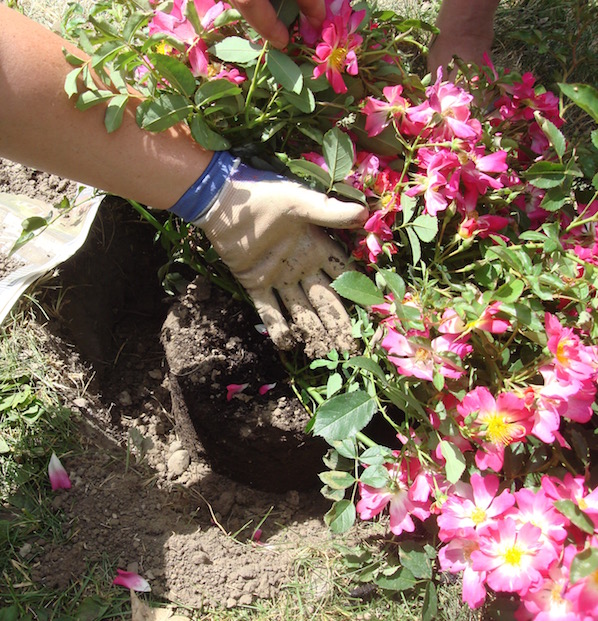
Don't use a fertilizer when you plant roses as it creates a bit of dependancy on it. Be sure to add a layer of compost on top of the soil in spring and fall so the rains filter it down through. Not fertilizing doesn’t mean not feeding them…. and good, healthy soil is full of nutrients which comes from rich compost.
Back to my rose hedge on the boulevard.
Because there is also a grass strip that gets mowed, I wanted to protect the blooms. The Drift Roses are low growing and some of the branches trail along the ground - also why this rose is great along the edge of a stone wall.
I added a strip of thick newspaper on top of the grass, wetting it well (otherwise it curls up). With no rain for a few weeks, the ground was brittle and hard and removing the grass would have been almost impossible - instead, I took the thick, gooey “dirt” and gravel from the bottom of the hole, and spread it on top of the newspaper.
Keep it wet until it begins to decompose which could be about a week.
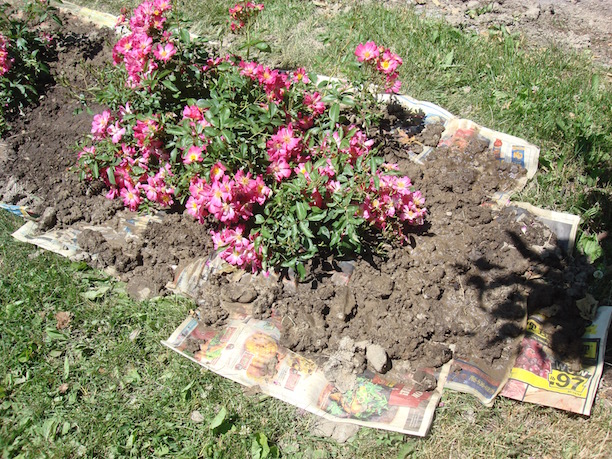
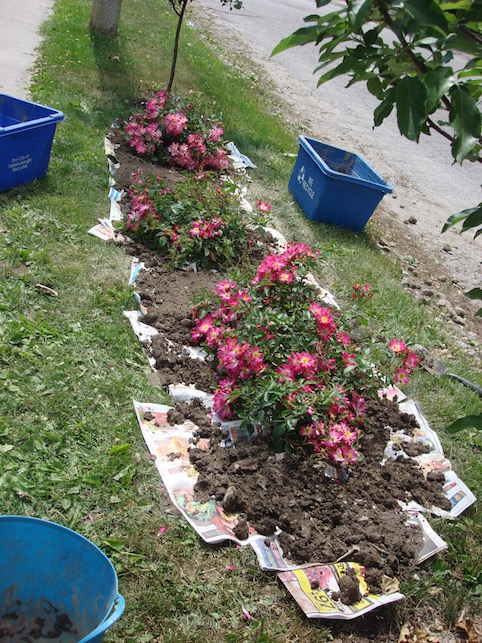
I wanted to make the the rose hedge look like a bed, without digging one, and most importantly, mulch keeps the soil moist, covers the newspaper and creates rich soil over time. It also gives "the mower-man", a visual line to follow so he does not run over the roses. Egads...
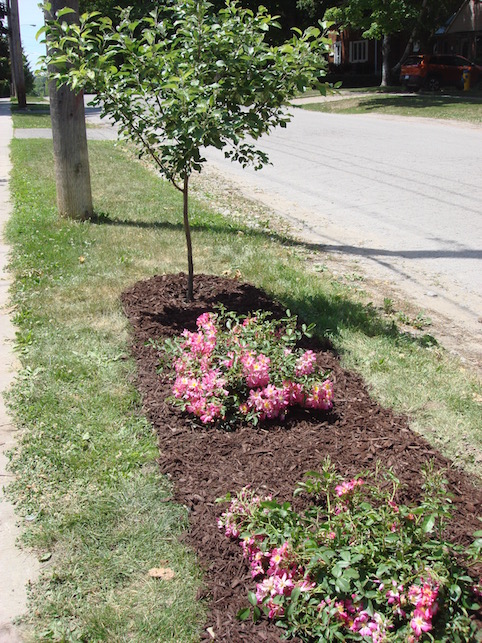
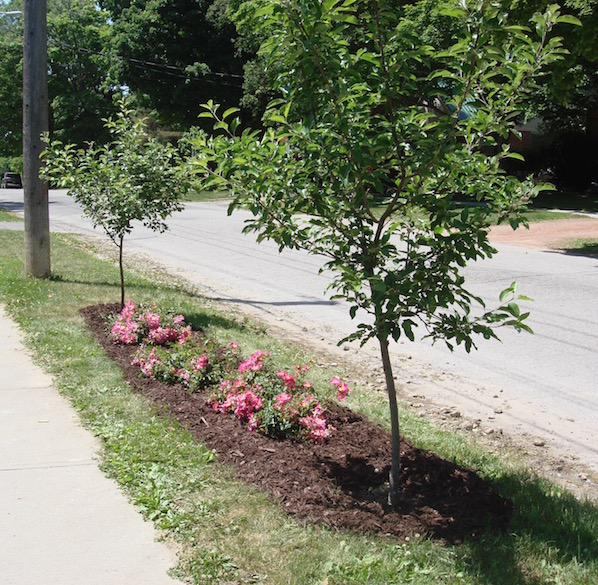
and... last but never least.... water deeply - and even if it rains, you will still need to water every day for a few days; then a couple of times a week until the rose has a chance to establish.. let them dry out a little between watering, so the roots will go deeper but never dry enough so the leaves are crispy.... or the roots will suffer...
UPDATE....
By the following September and we'd had a summer with incredibly difficult drought conditions. More severe than most and being on city, metered water we had restricted watering. I watered carefully but I had planted before the drought, so they had a bit of a head start.
I watered the roses by hand, and twice as often as I would have in normal conditions and they pouted for a few weeks. The blooms dropped off, the leaves began to curl and even the weeds did not come up. September brought much cooler days and the nights were also cool. The sun was still hot but the 'mean temperatures' were no longer mean.
All of a sudden, two weeks later, new buds appeared. And then, blooms!! Not as many as in the photos above, but blooms nonetheless. Gorgeous.
- and just two years later.... with just layers of fall leaves to protect them from sand and ice.... here they are.
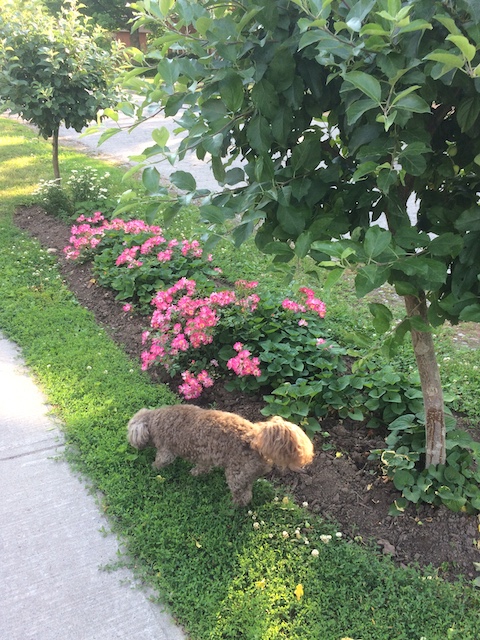
- and two more years... even better
